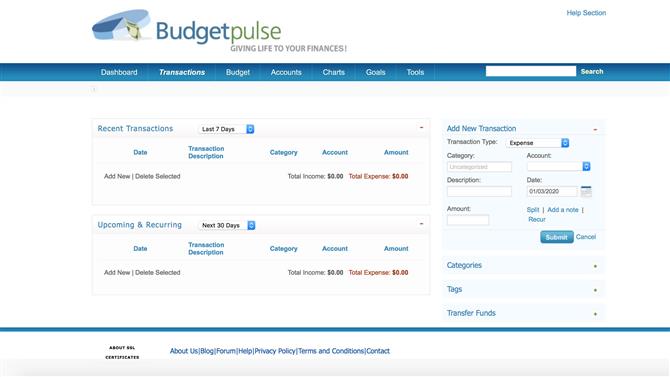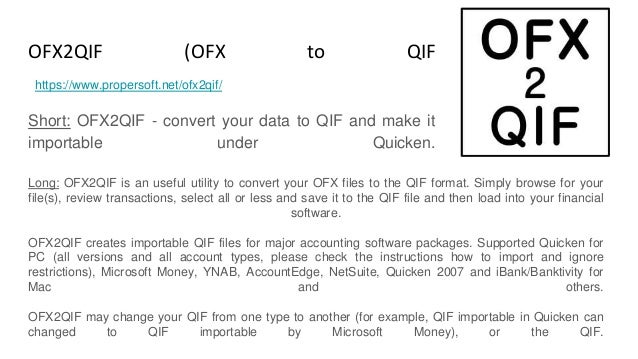Been a Quicken user in the past? Microsoft Money includes special utilities to ease the conversion of your Quicken data to Microsoft Money. Microsoft Money also includes import and export tools that you may, in some situations, be able to use to move financial data between Money and other programs.
Automatic Conversions of Quicken Data
When you install the Money software, the Installation Wizard looks for any Quicken
data file, the Installation Wizard suggests you convert this Quicken file to a Money
data file. Assuming you agree with Money’s suggestion, Money does the conversion
automatically. You don’t have to worry about a thing.
If for some reason you choose not to accept Money’s suggestion, or perhaps you installed
Money on a computer where Money wasn’t able to find a Quicken data file, you can use the File menu’s Convert Quicken File command to convert the Quicken data file to the Money data file.
To perform this operation, choose the File menu’s Convert Quicken File command.
When Money displays the Convert Quicken File dialog box, use its Look In box to
identify the folder holding the Quicken file you want to convert.
When Money lists the files in the selected folder, double-click the file you want to
convert.
The Convert Quicken File command converts Quicken files in the .qdb, .qdg, or .qdf
file formats. These file formats are native Quicken file formats. In other words, these
file formats—actually file extensions—are those used by Quicken files on a regular, day-to-day basis. If you want to convert a Quicken data file that’s been stored in the Quicken interchange format—this is a file that uses the .qif-file-format file extension— you need to use the File menu’s Import command.
WARNING The .qif file format is a special file format that Intuit created for Quicken
to make it easier for Quicken users to share data with other programs. In my
experience, the .qif format is not all that successful as a way to move data
between programs. I’m not sure whether this is because Quicken has trouble writing .qif files or because other programs, including Money, have trouble reading
.qif files. In any event, I caution you against using this file format carelessly. Be sure to check the data that’s imported or exported once it reaches its final destination.
Importing a Quicken or .qif file
You can import both Quicken and .qif files using the File menu’s Import command.
When you choose the command, Money displays the Import dialog box. Use the Look In box to identify the folder location of the file you want to import. After you select it, Money lists the files in the folder in the area beneath the Look In box. To import the file, simply double-click it.
After you import the file—this essentially means you create a new copy of the file that
Money can understand—using the old Quicken or .qif file, you can work with the file
in the usual way.
Export to the .qif data format
You can create a .qif file using the Money data file. You would do this presumably in
one situation: You want to move data from Money to Quicken, and to do so you need
to take your Money data file, convert it to a .qif file, and then import this file into the
Quicken program.
To perform such an export operation, take the following steps:
1. Open the Money data file you want to export.
Probably the Money data file that you want to export is already open. If it isn’t, use
the File menu to open it.
2. Tell Money you want to export the file’s information.
Choose the File menu’s Export command. Money displays the first Export dialog
box. This dialog box asks whether you want Loose QIF format or Strict QIF format. In general, you need to use the Strict QIF format. Only
the Money program understands the Loose QIF format.
3. Pick a name and location for the new file.
After you identify which of these two .qif files you want to use, click the OK button.
When you do this, Money displays the second Export dialog box. Select the folder location you want for the to-be-exported file using the Save
In box. Use the File Name box to name the file. The file extension needs to be .qif,
but you don’t have to supply the file extension. Money supplies it automatically.
4. Select the accounts you want to export.
After you have named the file, click the OK button. Money then displays a third
Export dialog box. Money uses this dialog box to ask which accounts you want to
export: regular accounts, which include bank, credit card, cash, and liability accounts;
or investment accounts, which include only investment accounts. Indicate which
collection of accounts you want to export by clicking either the Regular or Investment
option button, and then click the OK button. Money next displays a list of
accounts in the selected categories. Select the accounts you want by clicking them—
when you click an account, Money highlights it to identify the selected account—
and then click the Continue button. Money then exports the transactions in the
selected accounts, and that’s it.

Lastly, it offers QIF importing, so you can import your Quicken files, plus OFX (Open Financial Exchange) protocol. So you can pull in your data if your bank offers you the ability to export transactions. Dollarbird is another personal finance app with an eye towards collaboration and a monthly calendar. You synchronize your.
Random Posts
This tutorial shows how to convert an OFX file from your bank or credit card statement to QIF and import into Quicken 2017. We will use OFX2QIF utility.
As per the description you want to open Quicken QDF files using Excel. Let me provide you information related to opening Quicken files in Excel. You may not be able to directly open a QDF saved file using Excel, you may have to export the file according to Excel’s compatibility format to open Quicken file data in Excel. Sep 25, 2020 The Location of QIF file field displays the preset path of the import file. Select the appropriate option: Enter a name for the import file at the end of the existing path (make sure there is a backslash before the file name). Quicken will automatically add the correct file extension. Click Browse to select a different location. Quicken seemed to be the odds-on favorite to gain traction with many previous Money users. Quicken isn't a bad option, but it was a step backwards for most Money users. When the Money death bell rang at Microsoft, Intuit quickly began working on an improved import feature for Money users. Jun 15, 2020 Money in Excel imports your live banking data into a spreadsheet Money in Excel is Microsoft's challenger to Mint, Quicken, and other personal-finance apps.
Step by step instructions for Windows
Follow the steps below for the Windows version, followed by the Mac version.
Make sure you are using the latest version of OFX2QIF. Download it from the OFX2QIF download page. Start OFX2QIF and select an OFX file.
Review transactions before converting, check that dates are correct, have the correct year, deposits and withdrawals are assigned correctly.

Select the QIF Target to match your Quicken version or your accounting software: Quicken 2018+, Quicken 2017, Quicken 2015-2016, Quicken 2014 or earlier, Banktivity, Microsoft Money, NetSuite, MYOB, Reckon, YNAB, Quicken UK, AccountEdge, old Microsoft Money non-US, Quicken 4, Quicken French 2015.
Set the Account Name (must be matched as you have in Quicken) and the Account Type (must be matched as you have in Quicken) to create a QIF file for the right account. Set 'Output dates' if applicable.
Click the 'Convert' button to create a QIF file.
Confirm the file name and location.
Import created QIF file into Quicken 2017
Now the QIF file is created, let's switch to Quicken and import created QIF file. Before importing a QIF file make sure to backup your data. To import a QIF file, select 'File' - 'File Import' - 'QIF File', select created QIF file.
For Quicken 2017 or earlier, it is important to select 'All Account'. For Quicken 2018 or later you have to select the actual account.
Then click the 'Import' button.
Then click the 'Done' button.
Now your data is imported. Click 'Accept All' transactions - 'Done'.
Review transactions after import.
Step by step instructions for macOS
Make sure you are using the latest version of OFX2QIF. Download it from the OFX2QIF download page. Start OFX2QIF and select an OFX file.
Review transactions before converting, check that dates are correct, have the correct year, deposits and withdrawals are assigned correctly.
Make sure to set the Account Name and the Account Type to create a QIF file for the right account. Set the Date format if applicable.
Select the QIF Target to match your Quicken version or your accounting software: Quicken 2018+, Quicken 2017, Quicken 2015-2016, Quicken 2014 or earlier, Banktivity, Microsoft Money, NetSuite, MYOB, Reckon, YNAB, Quicken 2007 for Mac, Quicken UK, AccountEdge.
Click the 'Convert' button to create a QIF file.
Confirm the file name and location.
Import created QIF file into Banktivity
Now the QIF file is created, let's switch to Banktivity and import created QIF file. Before importing a QIF file make sure to backup your data. To import a QIF file, select 'File' - 'Import transactions'. Then click 'Import File' and select created QIF file.
Select a Quicken account to import.
Import Old Quicken Files
Then click the 'Continue' button.
Now your data is imported. Review transactions after import.
Microsoft Money For Windows 10

Related articles
